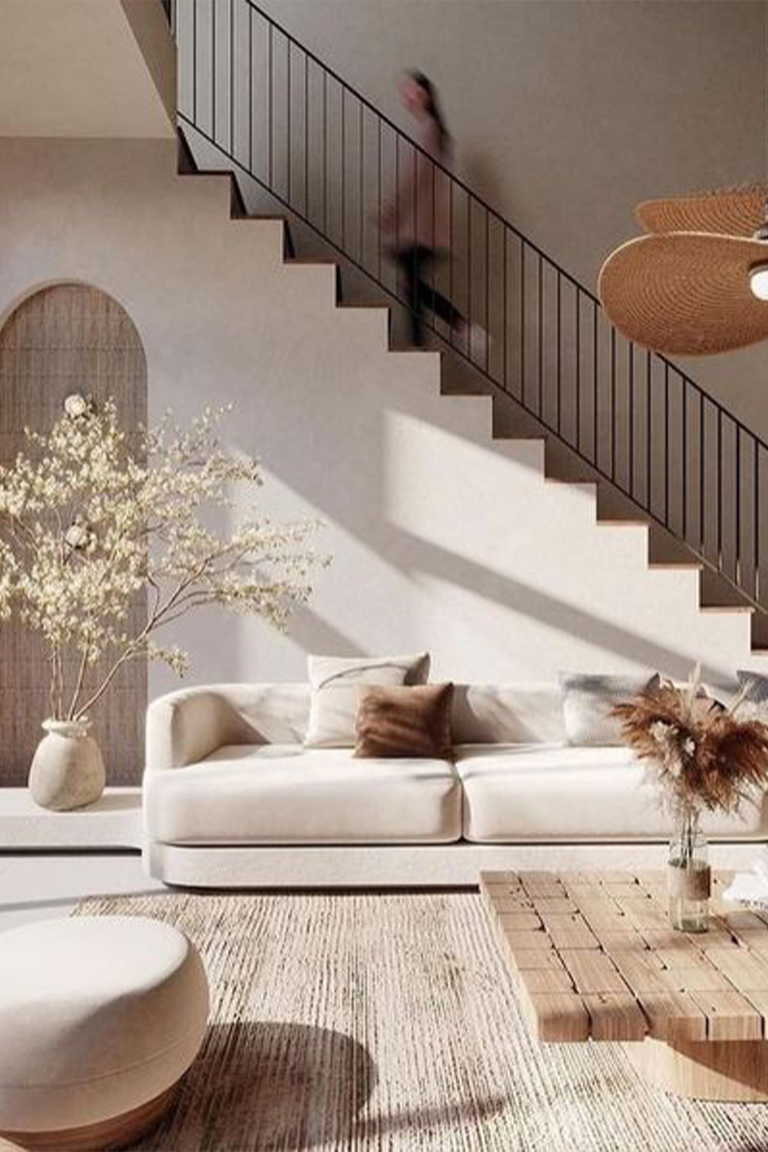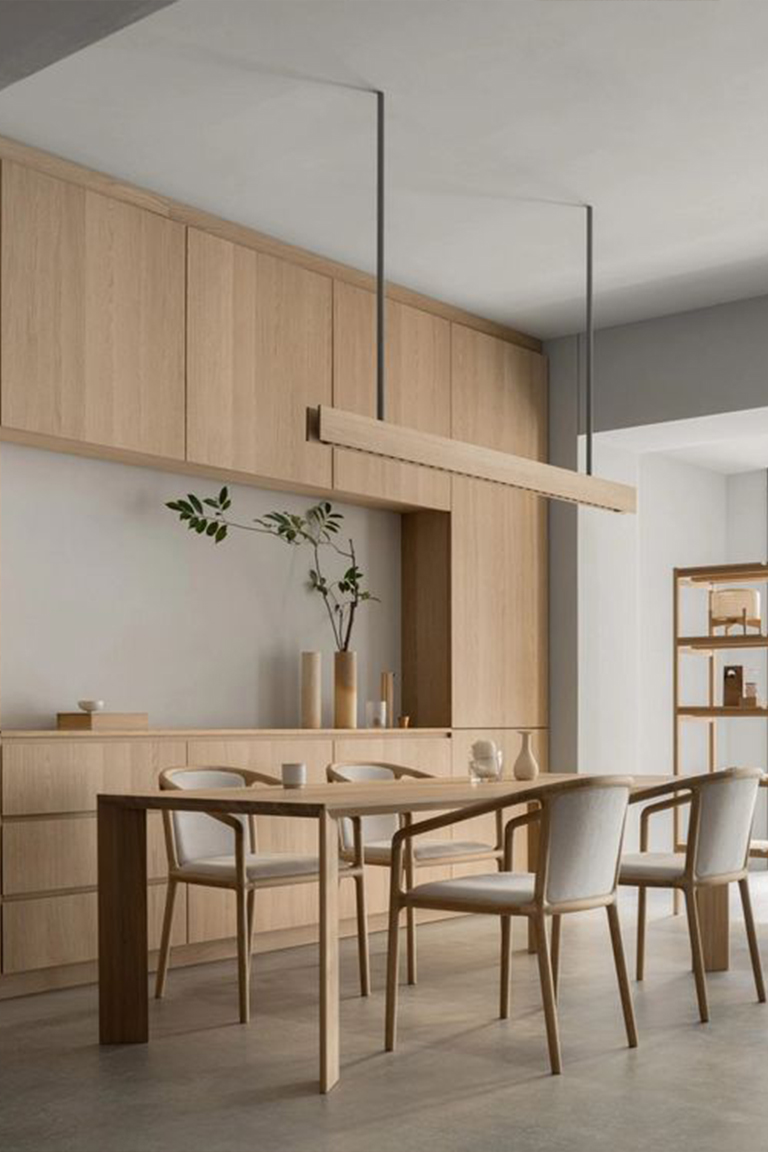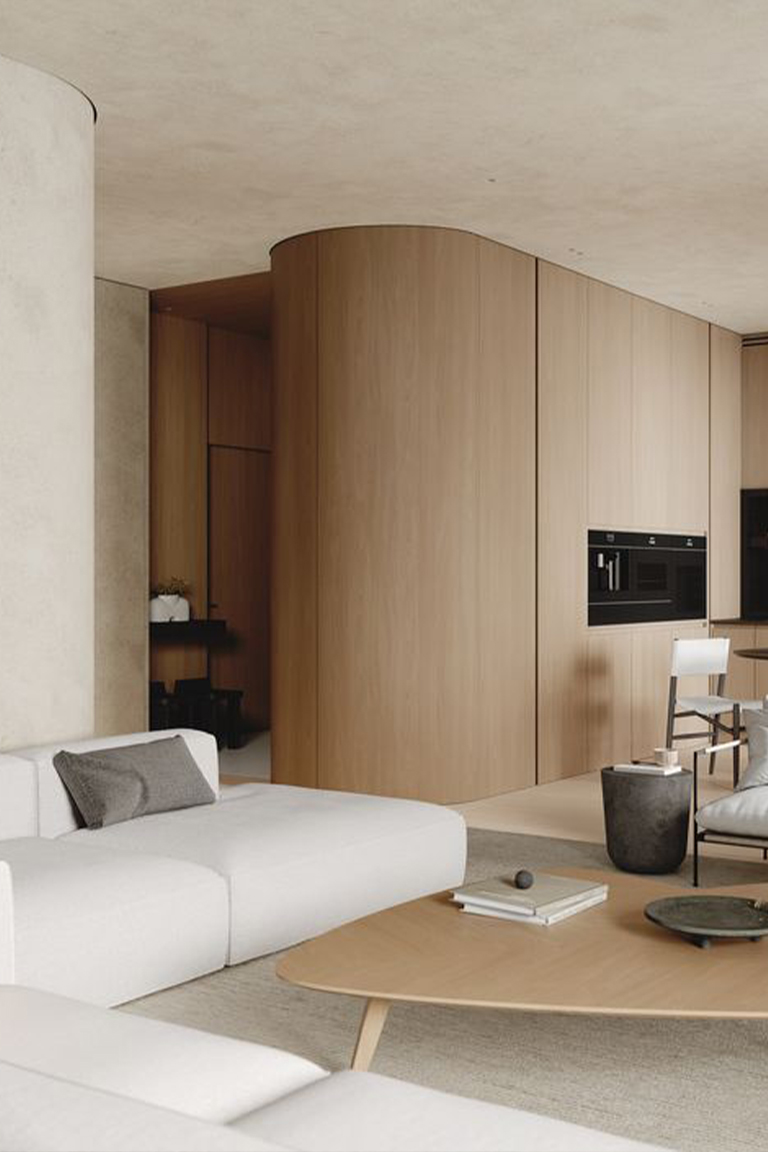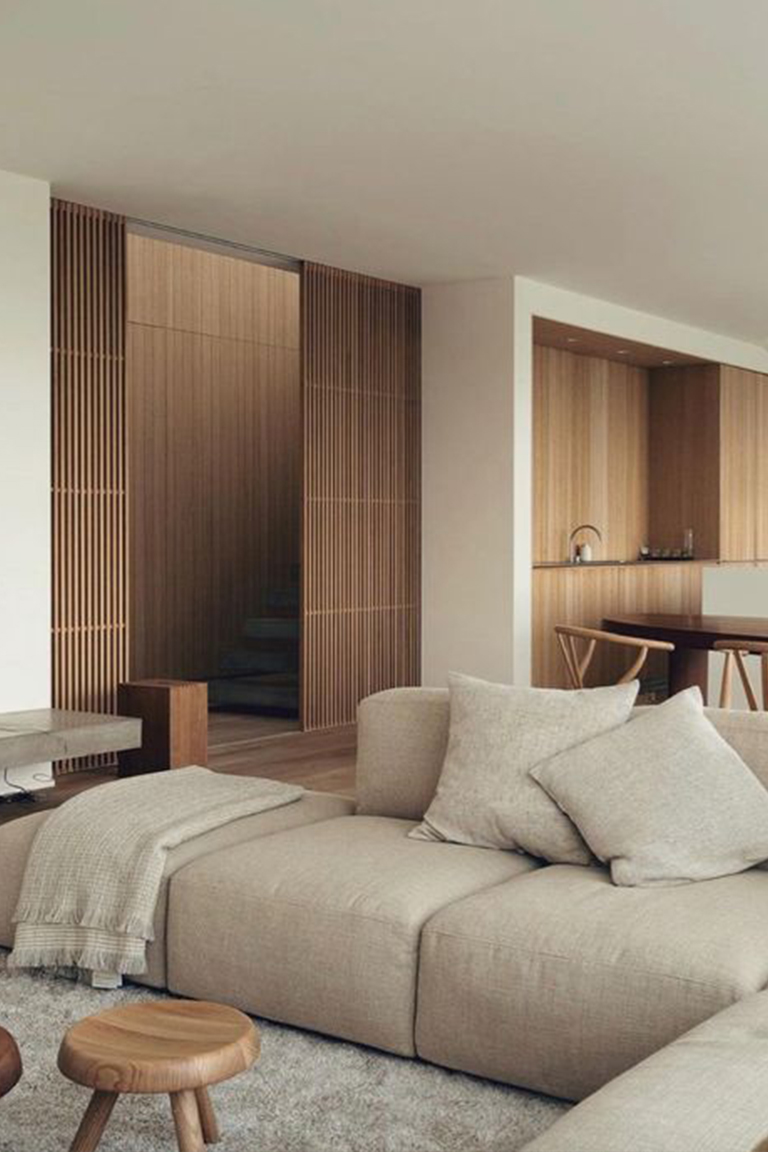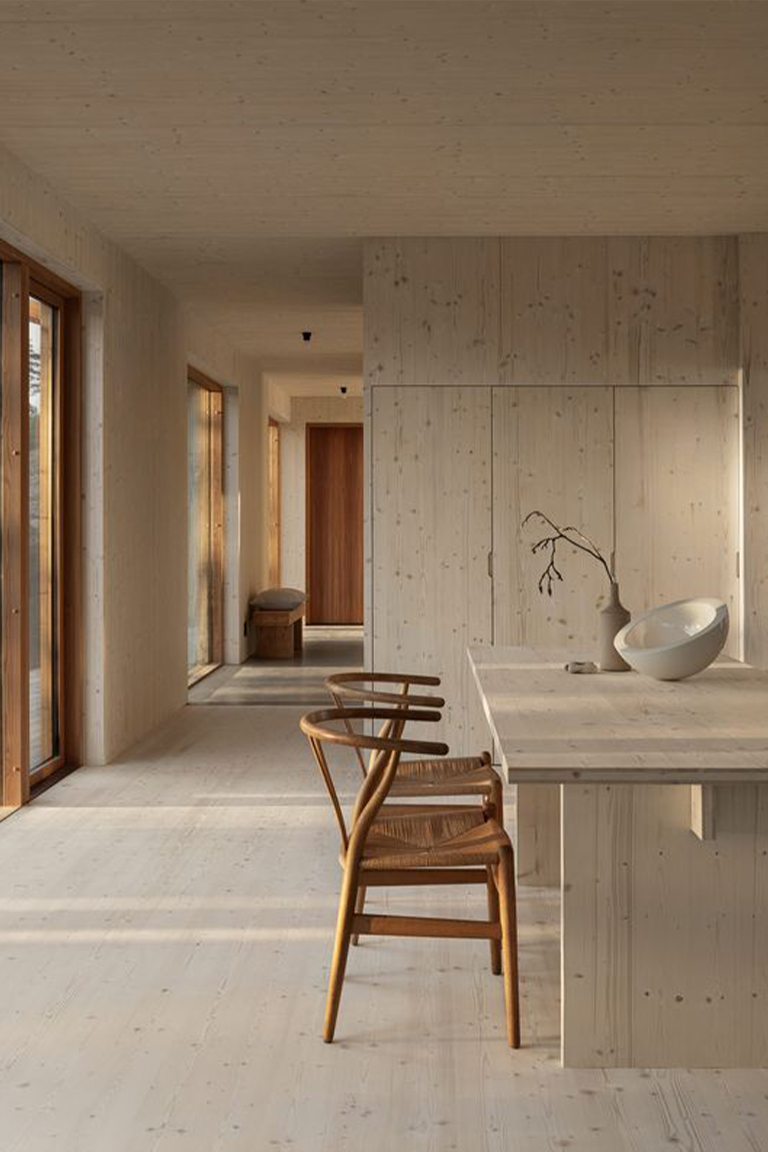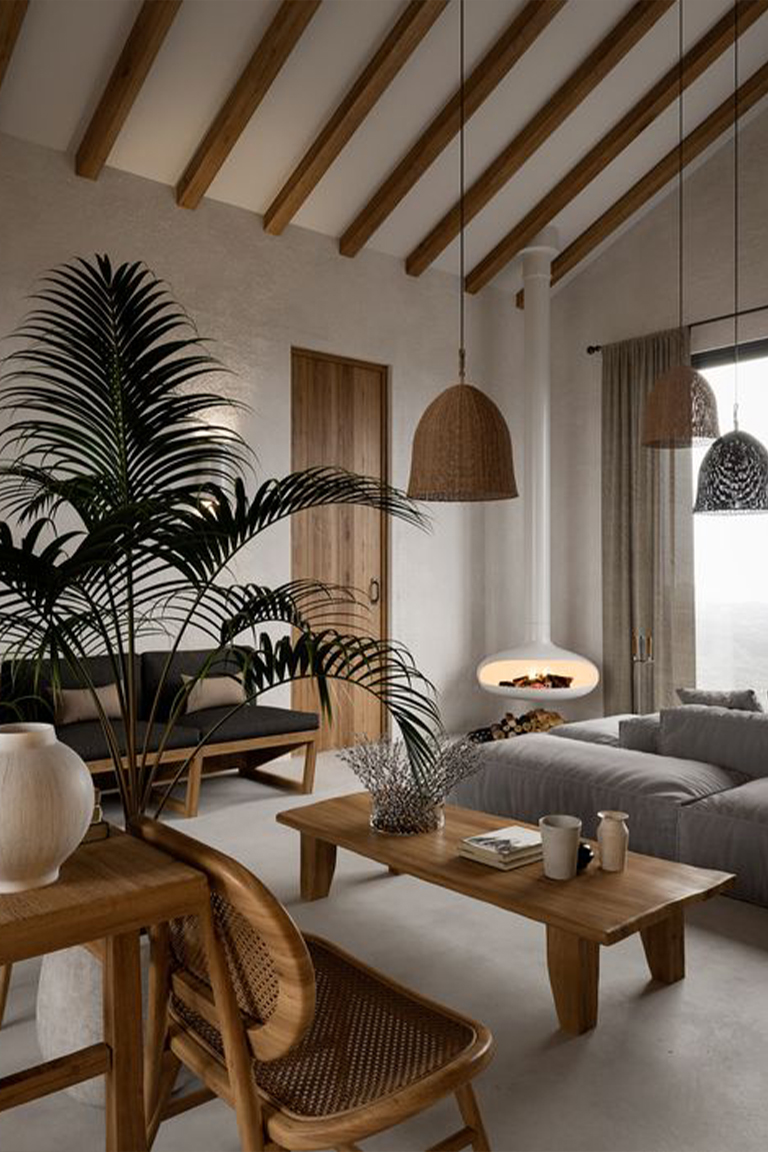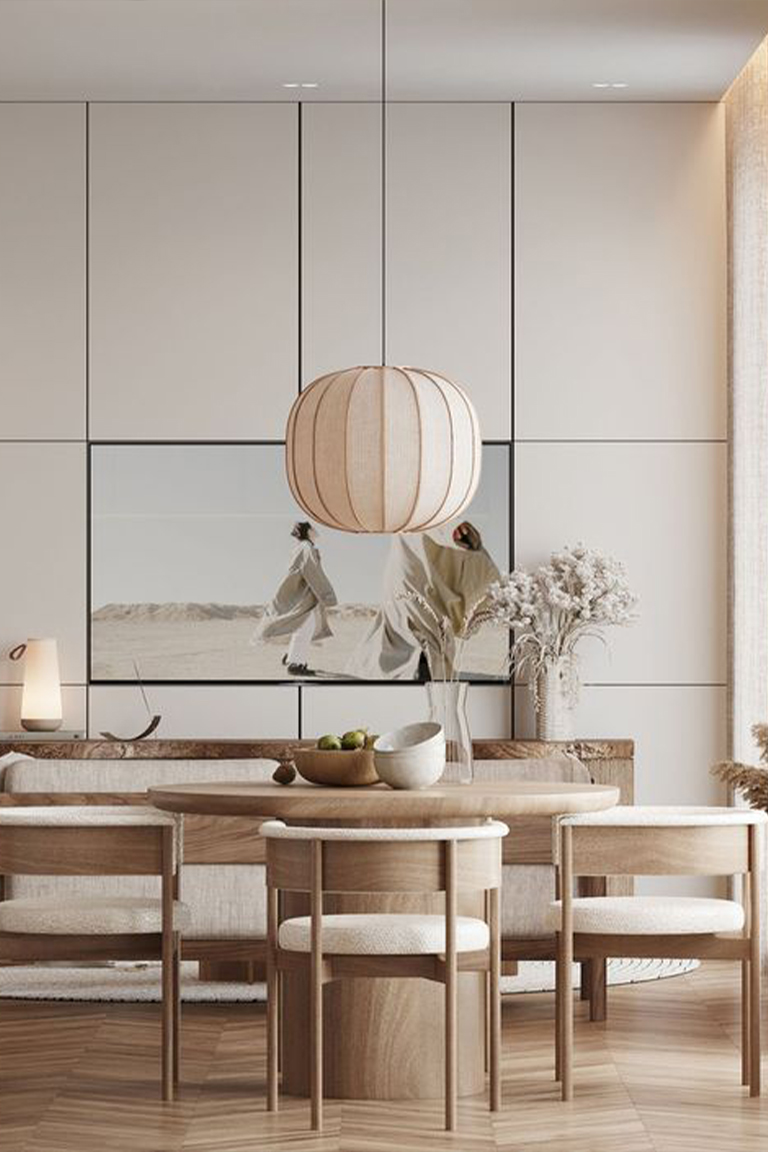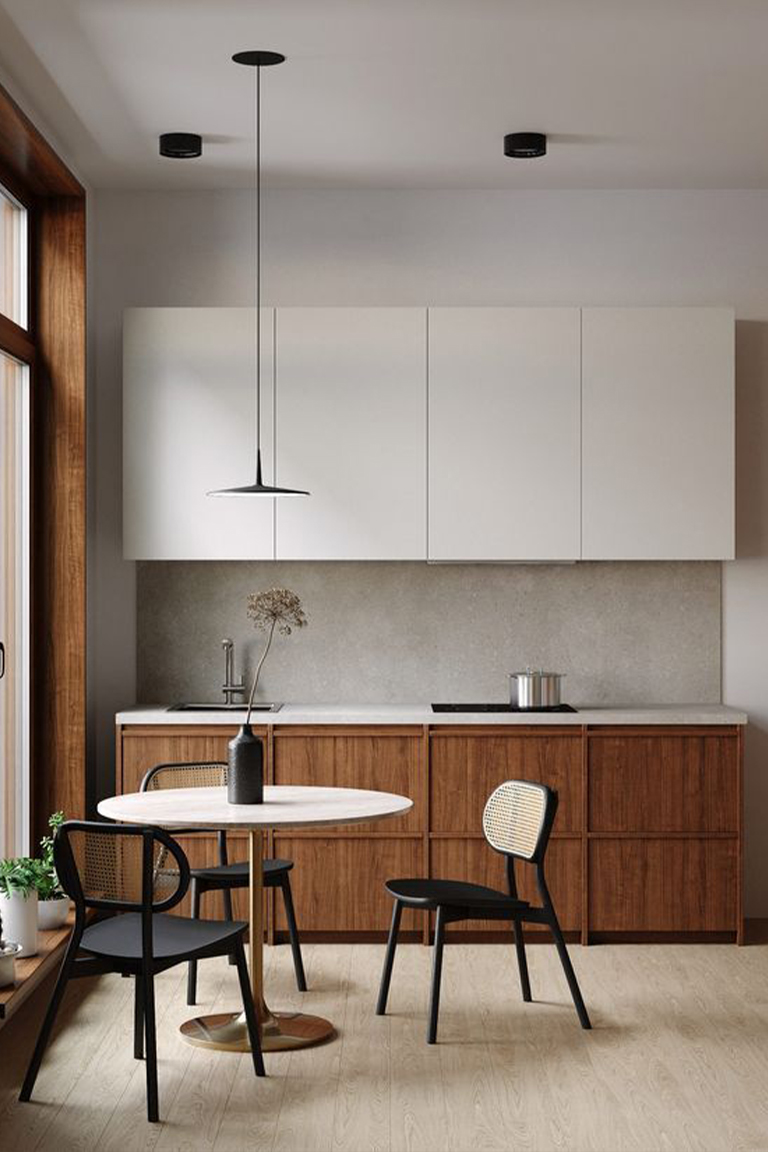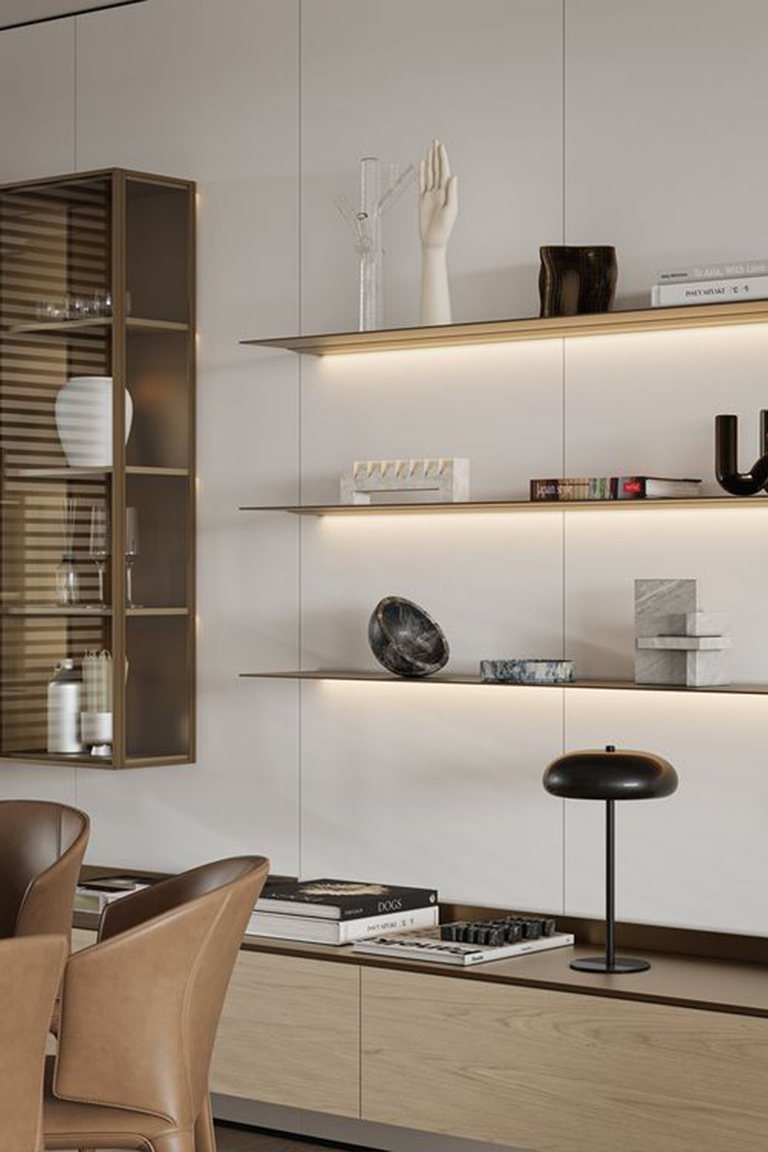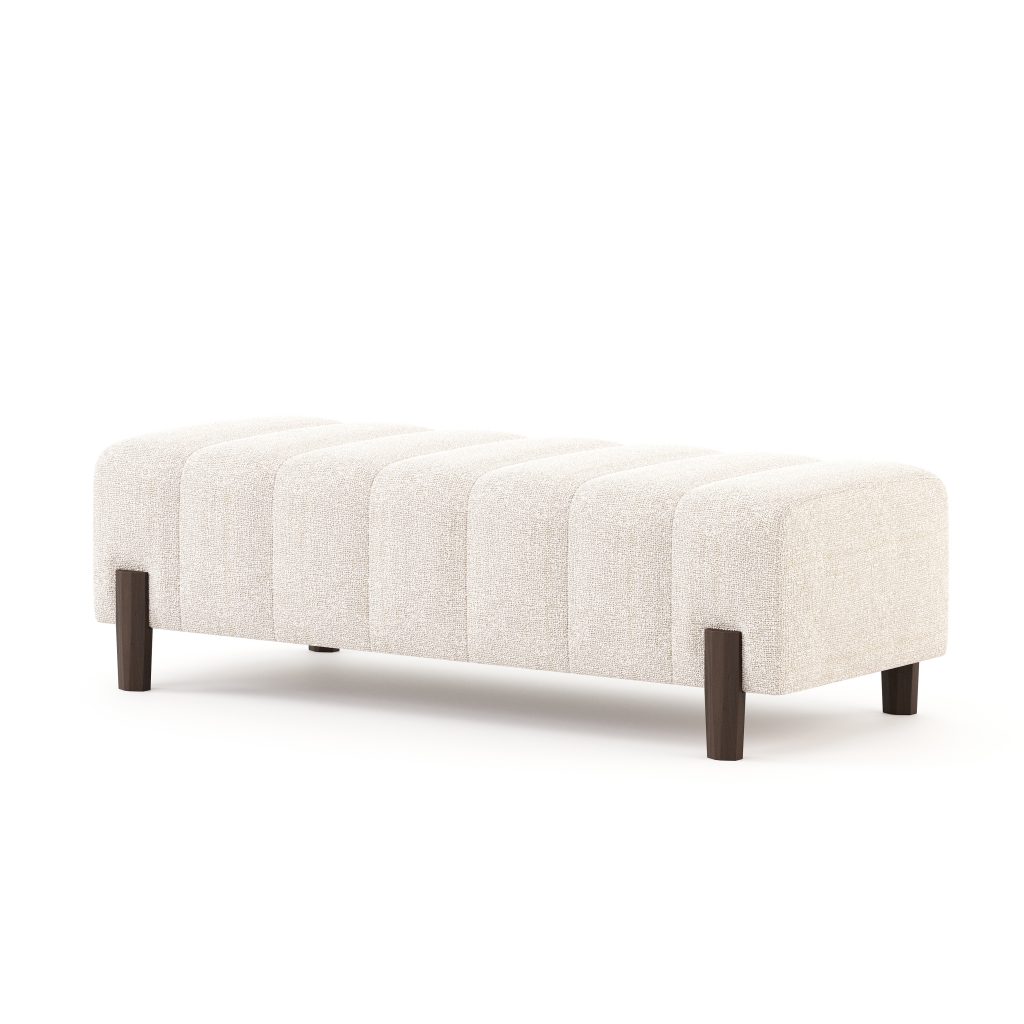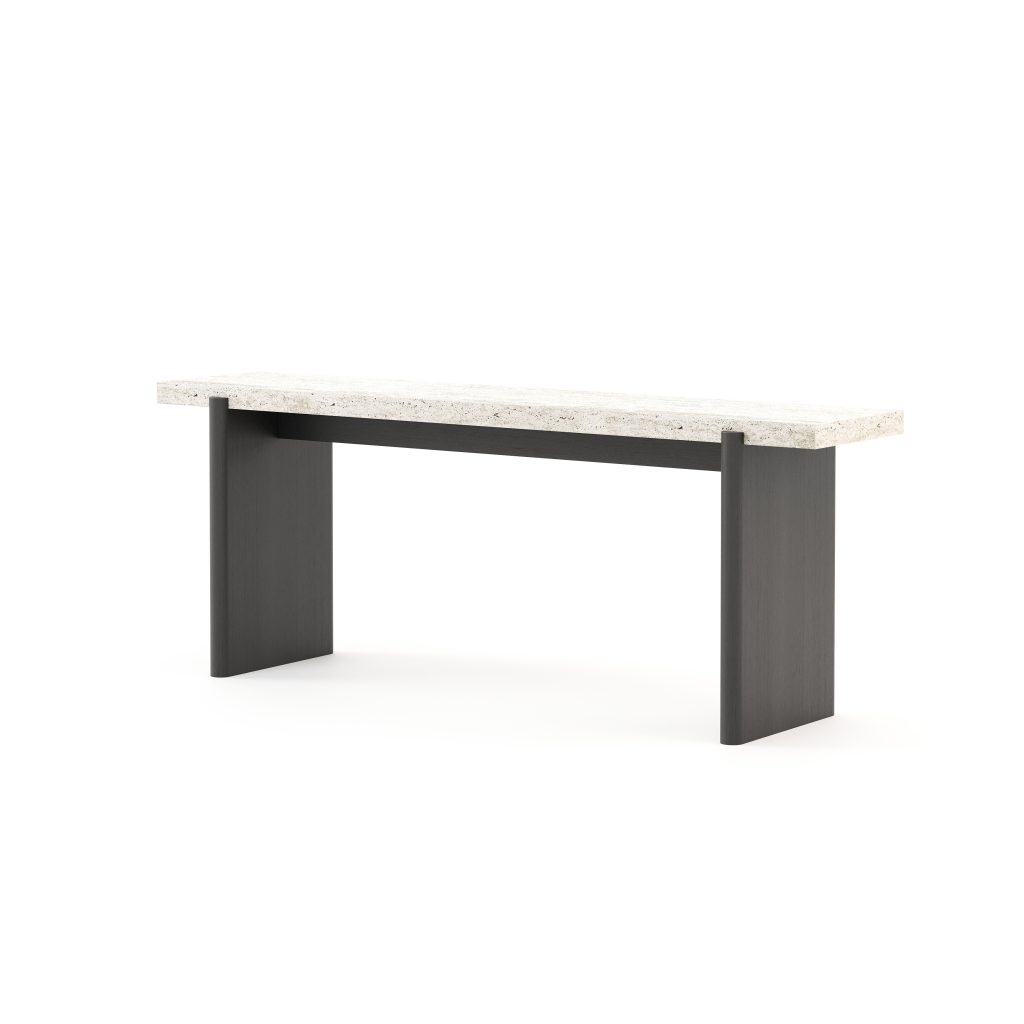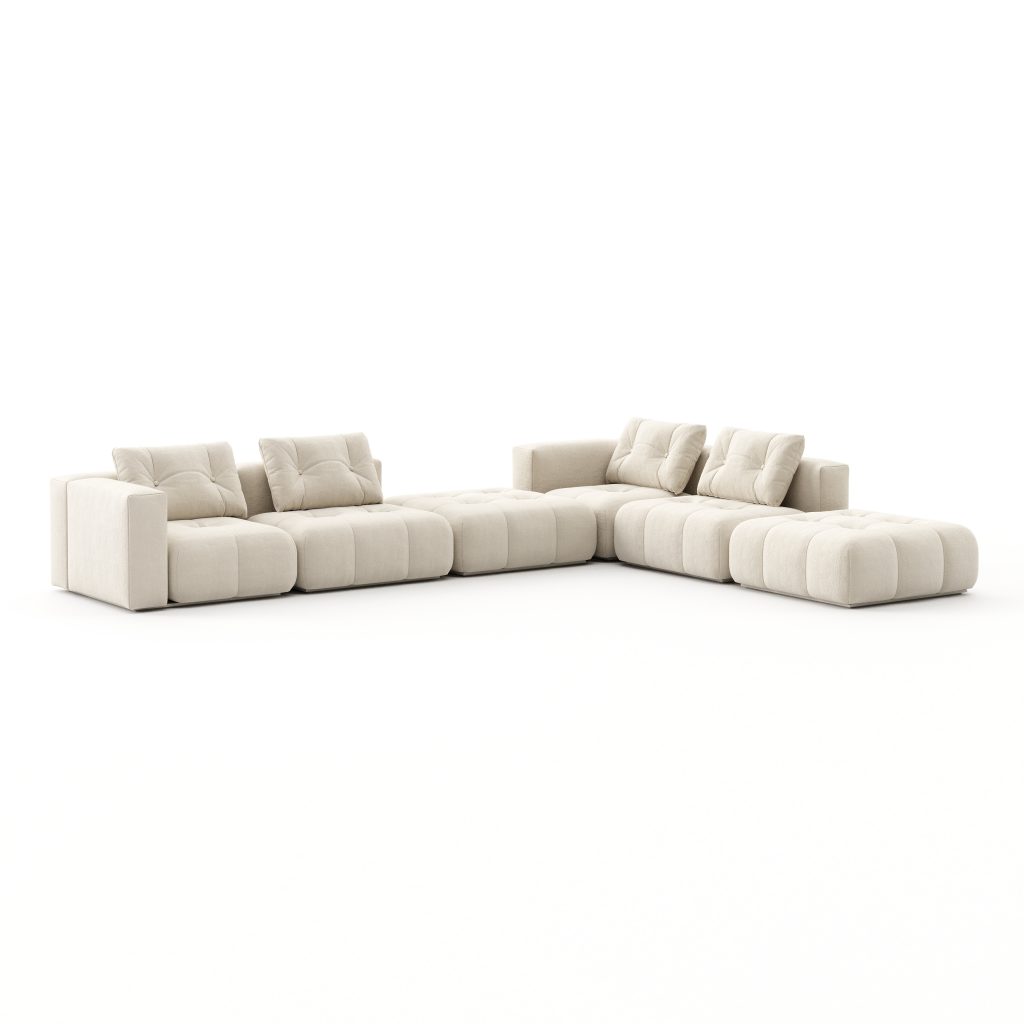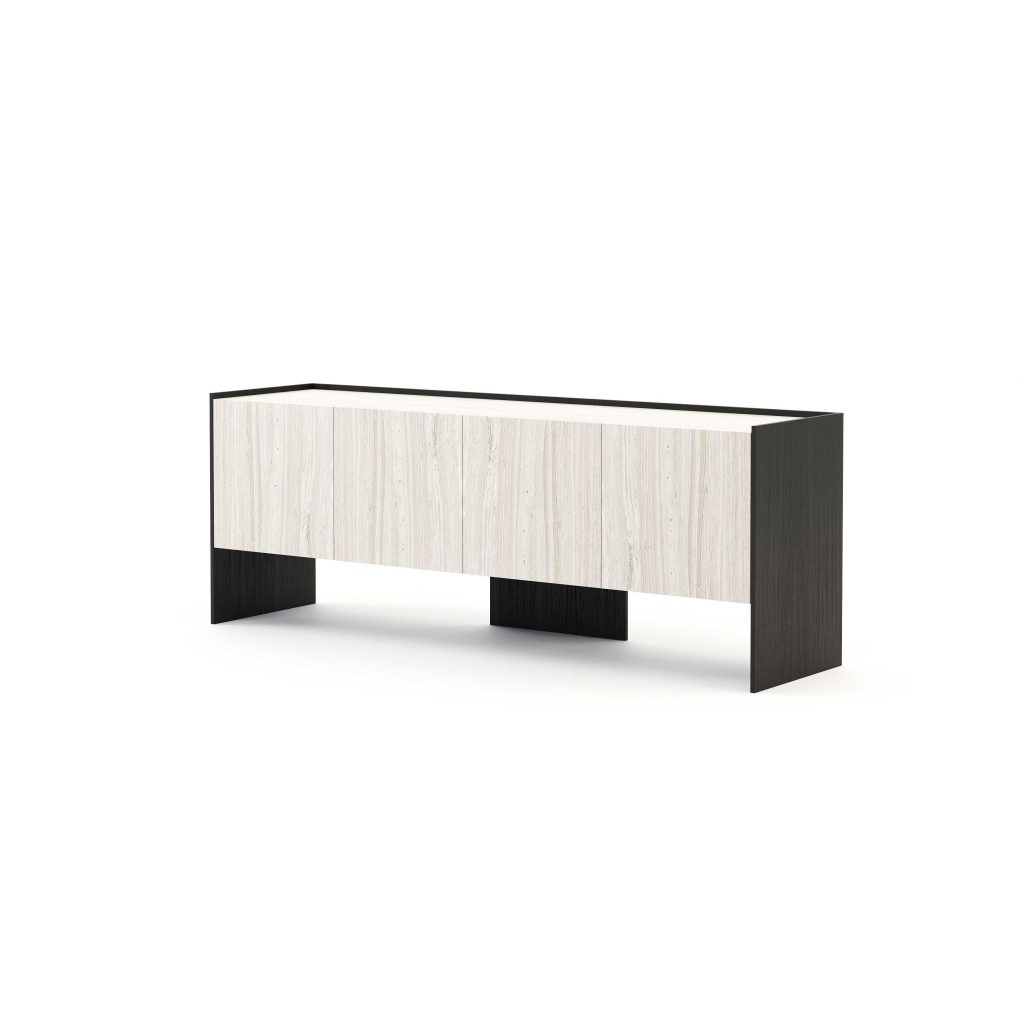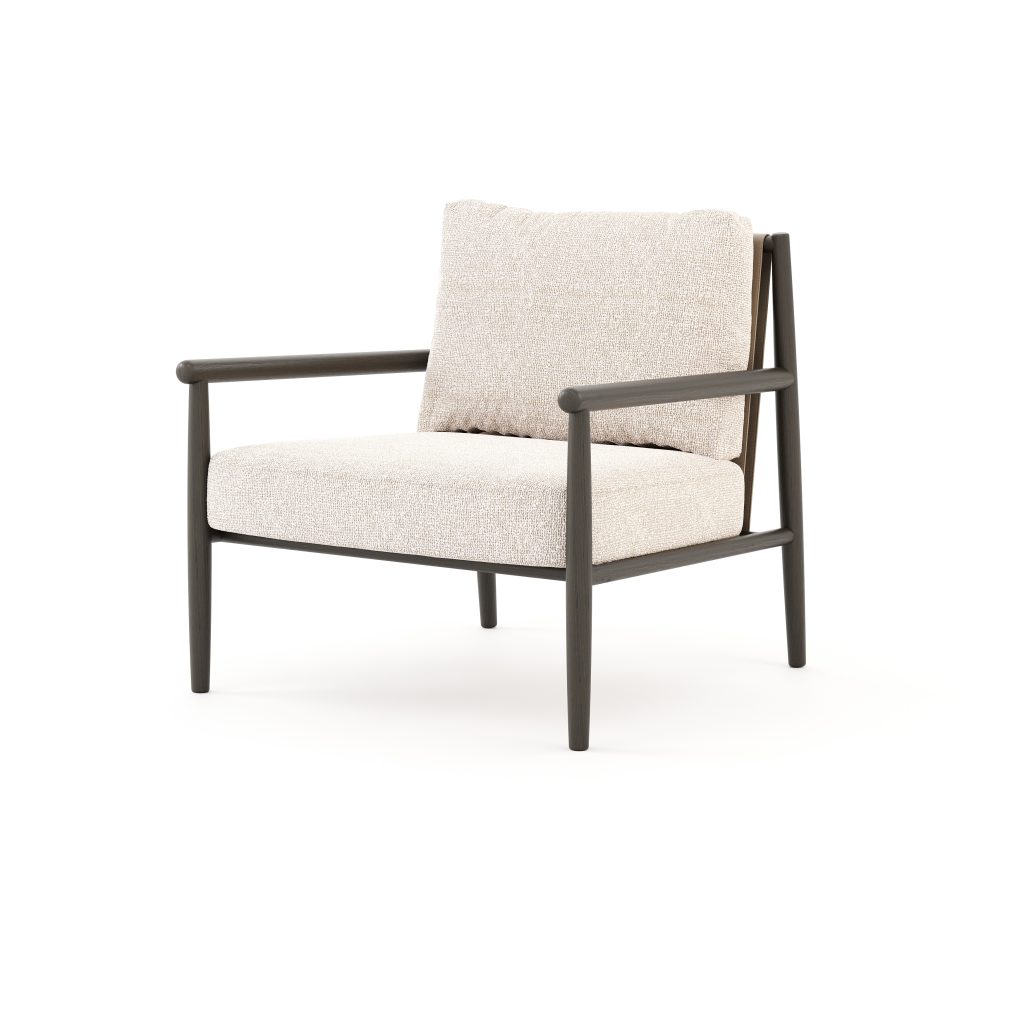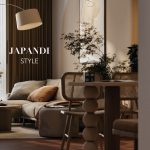A meeting place of peace is what we seek to transform our homes into. It’s true that each of us defines tranquillity through our own lens, but there are design styles that are the full expression of serenity.
The Japandi style is the right fusion of what’s really important and aesthetics that are elegant without being over-the-top. It thrives on elements with purpose for the space, nature in the details (or in everything), a relaxation of design rules and the peace of mind of seeing that everything is in its place. Find out all about how the Japandi style invites us to live a simple life, but with everything we need most.
The Interiors Mind Podcast
Style Philosophy
The Japandi style is a fusion of Japanese minimalism and Scandinavian design, which provides a look that combines the simplicity and grace of Japan with the functionality and cosiness of the Nordic countries. Although there is no specific origin for the Japandi style, it developed as a response to the contemporary search for calm, balanced and minimalist environments.
Japanese minimalism, also known as “wabi-sabi”, is an aesthetic philosophy based on simplicity, imperfection and an appreciation of natural beauty. It emphasises the reduction of unnecessary elements and the search for harmony and serenity. On the other hand, Scandinavian design is known for its functionality, minimalism and connection with nature. Scandinavian countries such as Denmark, Sweden, Norway and Finland have a tradition of valuing comfort, light and the use of natural materials in their interiors.
- Interior design trends in the living room | Credits: Pinterest
- Natural wood in the kitchen | Credits: Pinterest
Japandi Aesthetics and Design
Some characteristic design elements of the Japandi style
Colours: Use of a neutral and soft colour palette, such as white, grey, beige and natural wood tones. These colours create a calm and relaxing atmosphere, as well as providing a neutral base for other design elements.
Materials: The materials used in the Japandi style emphasise nature and authenticity. Light wood, such as oak or beech, is often used for furniture and flooring, bringing warmth and a connection with nature. Natural materials such as linen, cotton and silk are chosen for fabrics and upholstery.
Textures: The Japandi style values organic and natural textures. Surfaces with slightly rough or textured finishes are favoured over polished and shiny surfaces. Cushions made from natural fabrics, hand-knotted rugs and ceramics with delicate textures are examples of textured elements used in this style.
Shapes: The shapes in Japandi style are simple, clean and minimalist. Furniture tends to have straight lines and soft contours, without ornaments or excessive detail. The shapes are selected to be functional and practical.
Patterns: The Japandi style tends to use patterns that epitomise minimalism, if it uses any at all. If there is a pattern, it will be discreet and unobtrusive, such as a pattern of fine lines or soft dots. These patterns add a touch of visual interest without overwhelming the room.
- Warm-toned decor | Credits: Experts Guys
- Scandinavian design living room | Credits: Behance Project
Simplicity
Minimalism is, in fact, an essential part of the Japandi style, which combines elements of Japanese and Scandinavian design. In Japan, the minimalist aesthetic is deeply rooted in culture and philosophy, with influences from Zen Buddhism, which emphasises the search for simplicity, purity and tranquillity. The Japanese concept of “ma” is also relevant here, referring to the empty space between objects, which is considered as important as the objects themselves. This valorisation of empty space contributes to a sense of calm and balance.
Applying the principles of minimalism in everyday life can bring several benefits. Firstly, it helps to create environments that are more organised, clean and free of unnecessary distractions. This can promote a sense of mental clarity and reduce stress by allowing you to focus on what’s really important.
- Natural elements in minimalist decor | Credits: Pinterest
- Natural finishing materials in kitchen design | Credits: Pinterest
Connecting with nature
Incorporating natural elements into design is essential for creating a safe atmosphere. Plants play a fundamental role in the Japandi style, bringing life and a connection with nature to interior spaces. The presence of green plants, such as small succulents, helps to create a feeling of freshness and vitality. Plants also purify the air and improve the quality of the environment, contributing to the health and well-being of residents.
Natural light is also an essential feature of Japandi interior design. Valuing natural light allows spaces to be flooded with soft, diffused lighting, creating a cosy and serene atmosphere. Large windows, skylights and sliding doors are common in this style, maximising the entry of light and connecting internal environments with the outdoors.
- Biophilic design intertwined with Japandi decor | Credits: Pinterest
- Contrasting details between Scandinavian and minimalist style | Credits: Pinterest
Practical tips for adopting the Japandi Style
- Get rid of unnecessary elements and keep only those that are functional or bring joy to your life.
- Choose a soft, neutral colour palette for your walls, such as white, beige, light grey or earthy tones.
- Use natural materials such as light wood, bamboo, rattan and cotton when choosing furniture and decorations.
- Lighting plays an important role in the Japandi style. Opt for soft, diffused lights, avoiding bright, intense light.
- Bring nature into your home by incorporating plants and natural elements into your decor. Plants such as bonsai or succulents are ideal for adding life and energy to the room. Incorporate stones, shells and other natural elements into small decorative arrangements.
- Balance empty spaces with carefully selected objects.
- Valorise handicrafts and handmade pieces.
- Add cosy textures with cushions, soft blankets, wool rugs or natural fabrics.
- Key pieces of Japandi style | Credits: Behance Project
- Built-in shelf lighting | Credits: Pinterest
Jota Barbosa pieces in Japandi style
- Terra Stool
- Natur Console
- Antónia Sofa
Terra Stool| https://jotabarbosa.com/en/product/terra-bench/
Natur Console| https://jotabarbosa.com/en/product/natur-console/
Antónia Sofa| https://jotabarbosa.com/en/product/antonia-sofa/
- Her Sideboard
- Landform armchair
- Mocha Table lamp
Her Sideboard| https://jotabarbosa.com/en/product/her-sideboard/
Landform armchair| https://jotabarbosa.com/en/product/landform-armchair-ii/
Mocha Table lamp| https://jotabarbosa.com/en/product/mocha-table-lamp/

